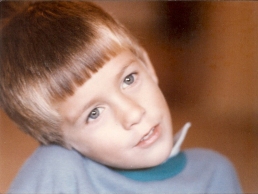 The summer before seventh grade, I went to a Boy Scout dance with William Meacham. I remember awkwardly trying to dance to “I Can’t’ Get No Satisfaction.” Judging by the number of times the band repeated the chorus, it was the only song they knew. Mick Jagger had nothing to worry about.
The summer before seventh grade, I went to a Boy Scout dance with William Meacham. I remember awkwardly trying to dance to “I Can’t’ Get No Satisfaction.” Judging by the number of times the band repeated the chorus, it was the only song they knew. Mick Jagger had nothing to worry about.
I thought of this as I sat in my coworker’s office this afternoon and enjoyed a small dark chocolate Easter egg. It was delicious- certainly worth the 60 calories, and left me feeling quite satisfied. This prompted me to think about some of life’s pleasures that bring a sigh of satisfaction and a smile to my face. I suspect you’ll be able to relate, and if you make your own list, you may find yourself a little happier, a little calmer and a little more contented. I did.
Momma G’s Most Satisfying Moments (In no particular order)
- A long hot shower on a cold winter morning.
- Beating the computer at Pogo Scrabble.
- Sipping coffee while watching the sun rise at the beach.
- Sipping coffee while watching the sun set at the beach.
- Watching my child shake hands with the right hand while clutching a diploma in the left.
- Getting a massage from someone whose only question is, “Do you mind if I extend your time for another half hour?”
- Making the last payment on a car that still has a lot of good miles left in it.
- A glass of wine and a delicious dinner after work on a Friday night, especially when somebody else cooks and cleans up.
- Late night talks with my brother Eric.
- Seeing my daughters in love with wonderful young men.
- My mother’s homemade bread, warm from the oven and swimming in butter.
- Finding a clean rest room after driving for several hours.
- Cool lotion and icy lemonade after a day on the beach.
- Laughing with my siblings until tears stream down our cheeks.
- Reading a letter…a real letter…from an old friend.
- Finishing an entire crossword puzzle without cheating.
- Snuggling under freshly laundered sheets that were dried outside.
- Hearing my newborn’s first cry after twenty-eight hours of labor.
- Flipping my pillow to the cool side, and seeing that there are still a couple of hours before my alarm clock will go off.
- A fresh pot of coffee and time to catch up with my best friend Sue.
- Giving when it is difficult, and not telling anyone about it.
- Hitting a perfect harmony that hangs suspended in the air so that you can almost see it.
- Hearing my children laughing from the other room, and knowing they will always be there for each other.
- Knowing that I loved more than I didn’t.





